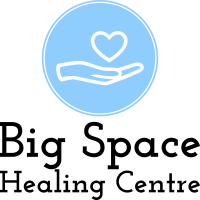Many of us know that a physical therapy plan is often recommended after an injury or chronic pain condition. Usually the plan includes both hands-off and hands-on techniques.
Hands-on treatment or manual physical therapy involves passive movements of the body’s joints and soft tissue. These movements can be used to increase flexibility of a muscle, decrease pain or stretch stiffness.

The therapist’s hands
If you’ve ever watched a physical or occupational therapist in action, you may have seen them moving their hands through a range of motion to stretch muscles, joint and ligaments. This is known as “hands-on treatment” and it’s one of the most effective techniques in physiotherapy.
Hand therapy focuses on treating upper extremity injuries and disorders. Patients ranging from those with simple isolated fingertip injuries to complex tendon and neurological conditions count on hand therapy to guide them back to the upper extremity functions they find necessary in their daily lives. This includes work functions like typing and lifting and personal functions such as unlocking doors or holding a baby.
Physio Franklin also play an important role in the industrial setting, providing ergonomic consulting and education to employees and employers to assist with state-of-the-art injury prevention and return to work protocols. They can help reduce loss time and employer indemnity costs by improving worker performance and injury rates through proactive case management strategies.
Hands-on treatment is a form of orthopaedic manual physical therapy (OMPT), which encompasses a broad array of therapeutic techniques that are performed by trained physical and occupational therapists. These include soft tissue mobilization, which involves passive movement of the muscles, joints and ligaments to elongate the tissues. This helps to release scar tissue and break up adhesions.
The therapist’s eyes
One of the most odd things about being treated hands-on is the way your therapist stares at you. While it can feel invasive and oppressive at times, therapists do this for good reason. They know that the way you hold your shoulders, the speed at which you speak, and eye contact can tell them all kinds of things about your mood and how they can support you.
They also know that holding your gaze is a powerful signal to your brain and body that they’re invested in your success. It activates your “natural high” center, called the endogenous opiate system. And research has shown that eyes-on treatment can reduce the pain from spinal cord injuries, concussion, and other conditions by releasing this chemical.
Another reason they may hold your gaze is to use EMDR techniques to help you process traumas and negative emotions. During an EMDR session, your therapist will move their fingers side to side in front of your face for 30 seconds at a time while you follow their movements with your eyes. This works to improve the way your eyes work together and helps with a variety of symptoms, including headaches and nausea.
Some therapists will even use this technique in conjunction with other treatments, such as acupuncture or joint mobilization. The key is to find a therapist that respects your feelings about the way they treat you and doesn’t push you to do anything you don’t want to.

The therapist’s ears
When physical therapists perform manual therapy, they use a variety of techniques. These include soft tissue massage, which is a series of stroking and gliding motions over a muscle or connective tissue to improve its relaxation and mobility. They also perform joint manipulation, which is a quick thrust-style technique that takes the joint beyond its normal range of movement in order to promote mobility and decrease pain. They also educate patients on proper posture and breathing, to reduce strain on accessory breathing muscles that may contribute to ear symptoms.
Interestingly, although most participants in our study expressed concern about the changing model of hands-on treatment, they largely offset these concerns with optimism. They described how they developed processes to augment their observation skills in the OTA-PTAs by becoming, in effect, their ‘eyes and ears’ in a new role that requires frequent, direct interaction with their patients.
Hands-on treatment is an important part of physical and occupational rehabilitation, but it’s not one size fits all. It’s crucial to find a physical or occupational therapist who can customize your treatment plan to meet your specific needs, including assessing and treating a wide variety of injuries and conditions that affect the body’s musculoskeletal system. To get started, contact Reddy Care today for an appointment with a physical or occupational therapist who uses hands-on treatment methods.
The therapist’s voice
There are some concerns that hands on treatment could create dependence or that it may not be helpful. However, it’s important to remember that every person is different and that the treatment isn’t intended to be a replacement for other therapies. The goal is to help patients move in new ways that they wouldn’t have otherwise, and this can make a big difference in the outcomes of their injuries.
Although prior research has shown that people change their voices in specific contexts, such as an adult using “baby talk” with a young child or a physician delivering potentially difficult news to a patient, it is rare for studies to model the way that vocal features fluctuate across portions of a therapy session. Specifically, this study found that the therapist’s voice pitch, energy and speaking rate decrease during the middle portion of the therapy session. This is consistent with psychotherapy theory and pedagogy that suggest a check-in or small talk at the beginning and therapeutic work during the middle of a session.
This study also demonstrated that the therapist’s use of unfinished sentences, repetitions of the client’s words and her touch are all forms of active engagement with the patient. Furthermore, the therapist’s use of gaze, termination of her actions and acceptance of interruptions from the patient promotes mutual participation in the encounter.
